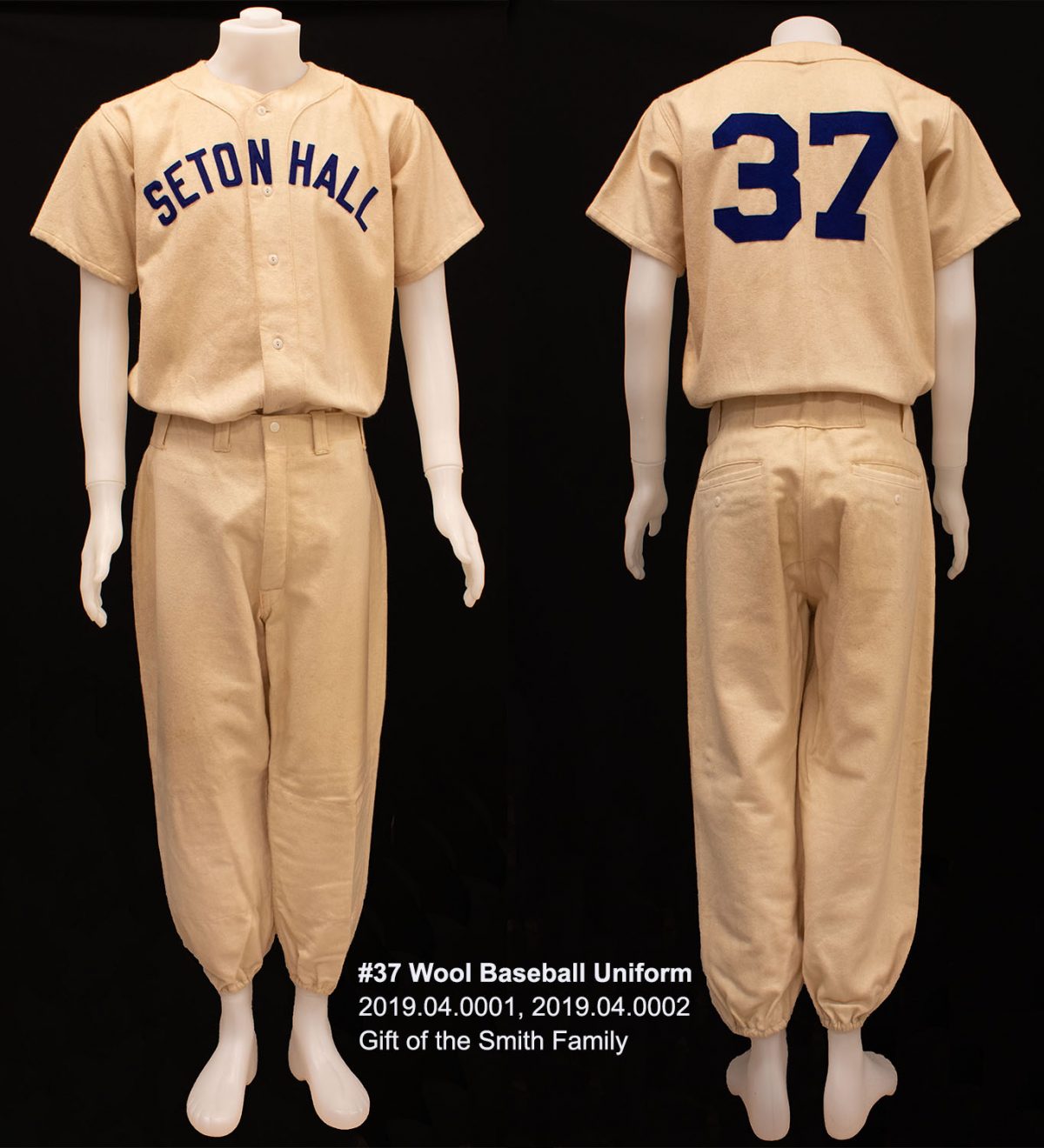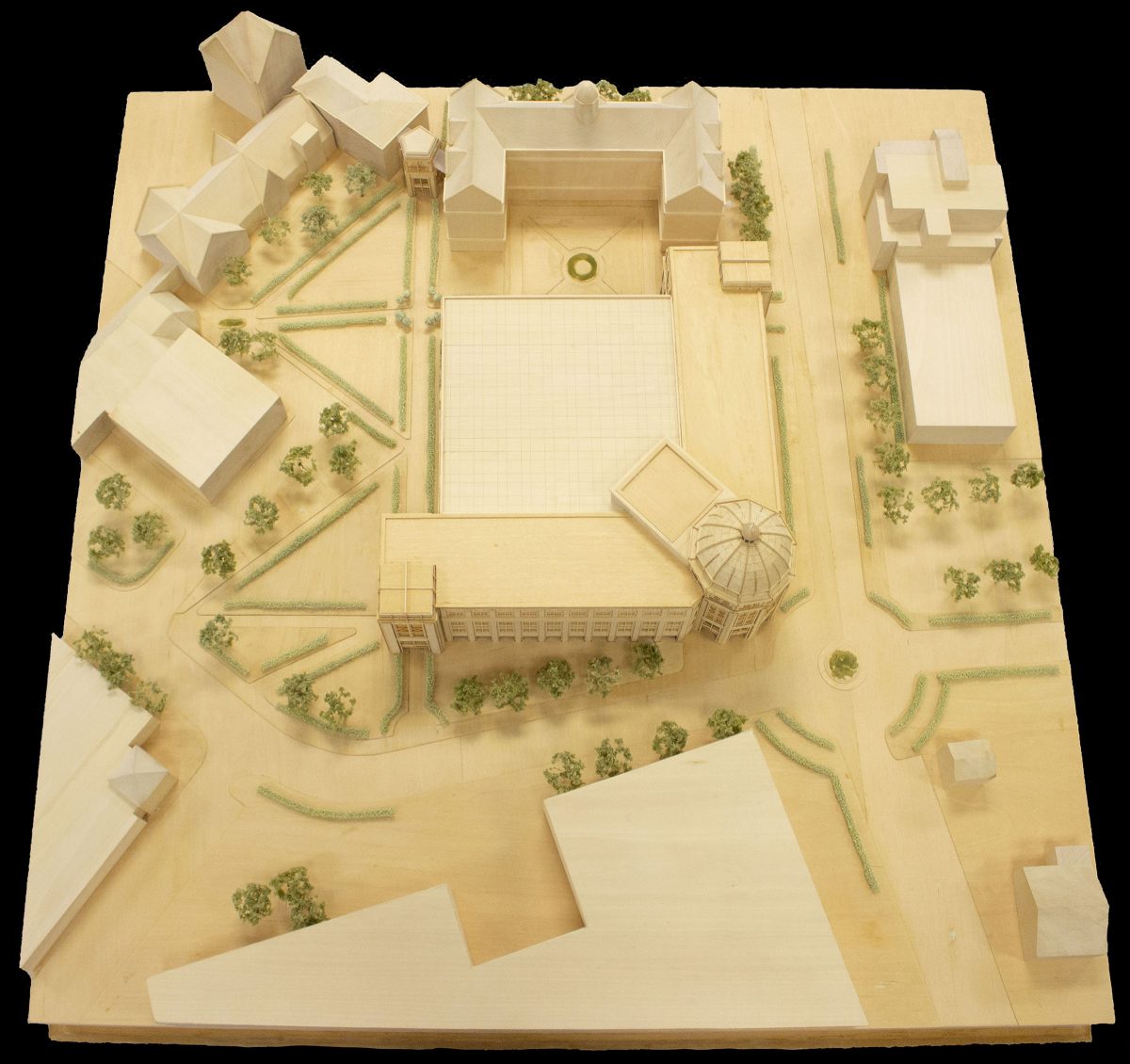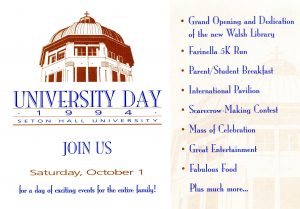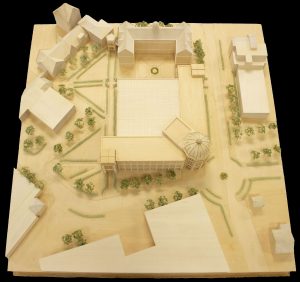We are currently poised to celebrate the latest Seton Hall commencement in creative ways during this time of COVID-19, but even without a formal communal ceremony we are proud to honor the graduates of the Class of 2020 nonetheless. We offer them congratulations, but also pause to remember several thousand others who received degrees from Seton Hall over the last few centuries. In looking back at the history of school commencement exercises and alumni rolls, a common question often arises. Have you ever wondered who was the first individual to receive a diploma from the Seton Hall? The answer takes us back to 1862 when a young man by the name of Louis Firth earned a Bachelor of Arts degree and became the first to set a trend that lasts to the present day.
When Louis Firth crossed the Hudson River to New Jersey from his New York City home to attend Seton Hall College as a freshman in 1857 he knew that a seven-year academic journey (Prep and College divisions were combined at this time) that a unique intellectual awakening awaited him. What he experienced followed a set of prescribed and orderly goals that he and his fellow Setonians took to heart: “The object of the Institution is to  impart a good education in the highest sense of the word – to train the moral, intellectual, and physical being. The health, manners, and morals of the pupils, are an object of constant attention. The system of government is mild and paternal, yet firm in enforcing the observance of established discipline. No pupil will be received from another College without unexceptional testimonials, and none will be retained, whose manners and morals are not satisfactory.”
impart a good education in the highest sense of the word – to train the moral, intellectual, and physical being. The health, manners, and morals of the pupils, are an object of constant attention. The system of government is mild and paternal, yet firm in enforcing the observance of established discipline. No pupil will be received from another College without unexceptional testimonials, and none will be retained, whose manners and morals are not satisfactory.”
After graduation, Firth moved back to New York City and lived most of his life at West 37th Street in Manhattan as one of a growing number of alumni who remained in the metropolitan area. In an interview conducted during the early 20th century, Firth opened up to the local press about his days at Seton Hall and some of the memorable figures he encountered during his halcyon days on campus.
Early in the article the reporter noted that: “Mr. Firth who is hale and hearty and as active as a man twenty years his junior, paid a tribute to the work of the first president (Father Bernard McQuaid) when the college was at Madison, where he first saw him in 1857, and at South Orange when the college was established there.” Of Reverend McQuaid, Firth marveled at his “vigor” and went on to recount that: “. . . this remarkable man had a wonderful influence over the boys at college . . . the holy and learned men with which he surrounded himself and taught us imparted the qualities which fit a man to live. Character was formed at Seton Hall, because of the environment.”
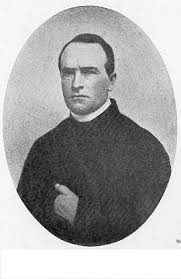
When it came to recollecting his graduation day, Firth colorfully illustrated the scene and his creativity in marking this historical day . . .
“The first commencement exercises were held on an improvised stage built under the trees just east of the present college buildings. There were but a small number present, as South Orange was but a hamlet, and there were no cars to Newark. Through a prank played by the boys a few nights before commencement day, I came very near not being the first graduate of the college. It happened in this way: The college bell rang every morning at 4 o’clock, and the farmers for miles around roe by it. One night we planned to ring it at 2 o’ clock instead, and after setting the college clock two hours fast, I was selected to pull the rope. I did it, and hustled back to bed. The college prefect, whose duty it was to ring the bell, appeared just then, looked at the clock and went about his early morning work, wondering all the while how the bell rung. The farmers were awakened and started in to do a day’s work. Needless to say, when the sun did not rise at the appointed time, watches were compared, and the faculty decided that a prank had been played.” Needless to say that despite the “time change” Firth managed to make it to the ceremony and receive his honor due. A full overview of the ceremony can be viewed below . . .
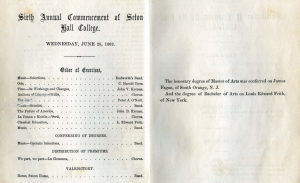 For more information on the 1862 academic year and other early 19th century details featuring studies at Seton Hall please consult our Undergraduate Catalog(ue) links found via the Archives & Special Collections – eRepository site at – https://scholarship.shu.edu/archives/ We are also available to assist with information on commencement ceremonies along with other research questions concerning Seton Hall and we can be reached via e-mail at: Archives@shu.edu
For more information on the 1862 academic year and other early 19th century details featuring studies at Seton Hall please consult our Undergraduate Catalog(ue) links found via the Archives & Special Collections – eRepository site at – https://scholarship.shu.edu/archives/ We are also available to assist with information on commencement ceremonies along with other research questions concerning Seton Hall and we can be reached via e-mail at: Archives@shu.edu
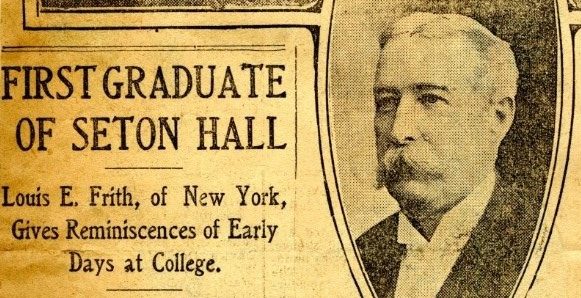
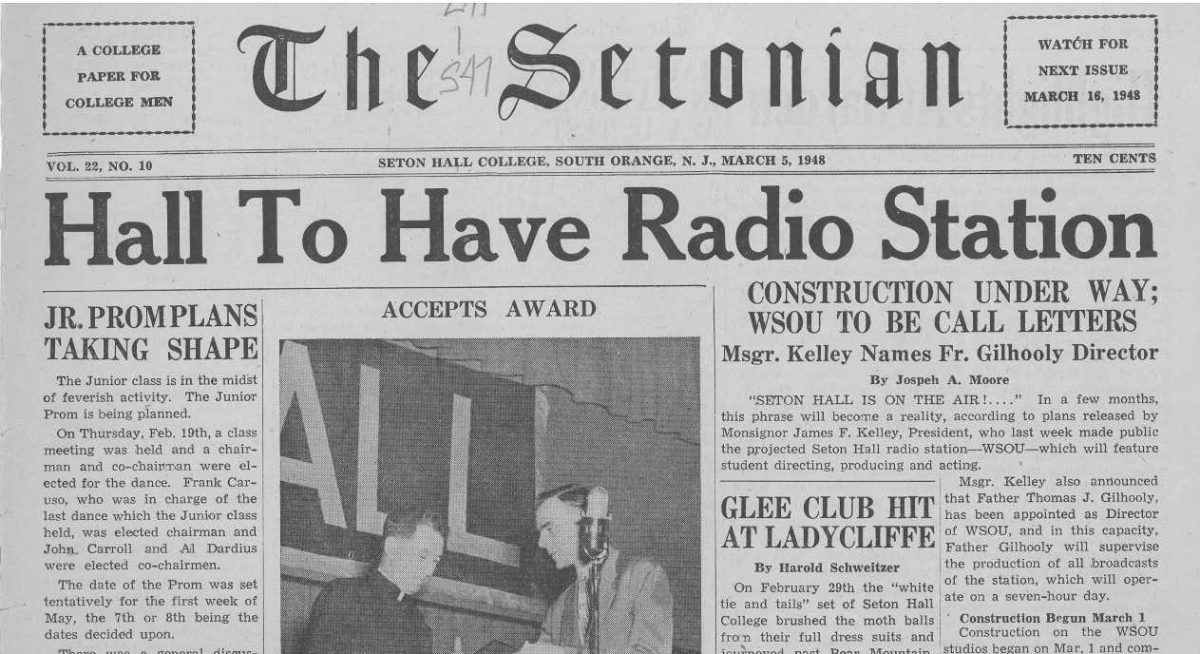
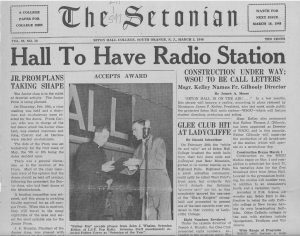
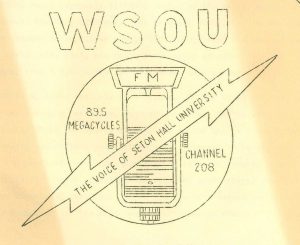
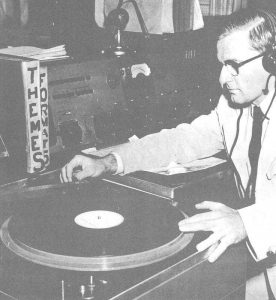
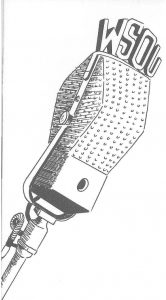

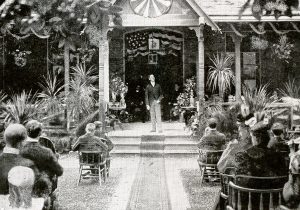
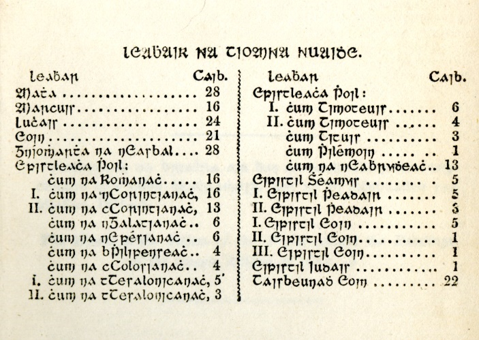


 In addition to the content, the 1830 tome is particularly special as it features a bookplate that our copy was originally donated by Bishop Bernard J. McQuaid (1823-1909) to the now defunct St. Bernard’s Seminary in Rochester, New York which he had founded in 1893. The circuitous route of this book has found its way to our collection with strong connections to the original donor who was noted as a solid advocate of Catholic educational endeavors. Upon ordination in 1848, McQuaid whose parents came from Tyrone and raised in nearby Powel’s Hook (now known as Jersey City) was a young priest who was first assigned a parish in Madison (the original home of Seton Hall) and later the first rector of Saint Patrick’s Cathedral in Newark for the Diocese of Newark of Newark when the See was established in 1853.
In addition to the content, the 1830 tome is particularly special as it features a bookplate that our copy was originally donated by Bishop Bernard J. McQuaid (1823-1909) to the now defunct St. Bernard’s Seminary in Rochester, New York which he had founded in 1893. The circuitous route of this book has found its way to our collection with strong connections to the original donor who was noted as a solid advocate of Catholic educational endeavors. Upon ordination in 1848, McQuaid whose parents came from Tyrone and raised in nearby Powel’s Hook (now known as Jersey City) was a young priest who was first assigned a parish in Madison (the original home of Seton Hall) and later the first rector of Saint Patrick’s Cathedral in Newark for the Diocese of Newark of Newark when the See was established in 1853.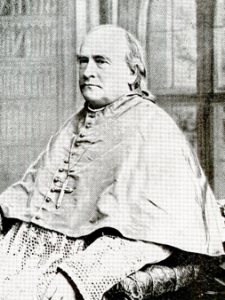 Father McQuaid was then assigned by Bishop James Roosevelt Bayley as the first president of Seton Hall College upon its founding in 1856, and he also became the inaugural rector of the Seminary from 1860-62. He left the school for two years, but came back for a second stint as chief executive at the college from 1859-67. More introductory information on McQuaid can be found via the following link –
Father McQuaid was then assigned by Bishop James Roosevelt Bayley as the first president of Seton Hall College upon its founding in 1856, and he also became the inaugural rector of the Seminary from 1860-62. He left the school for two years, but came back for a second stint as chief executive at the college from 1859-67. More introductory information on McQuaid can be found via the following link – 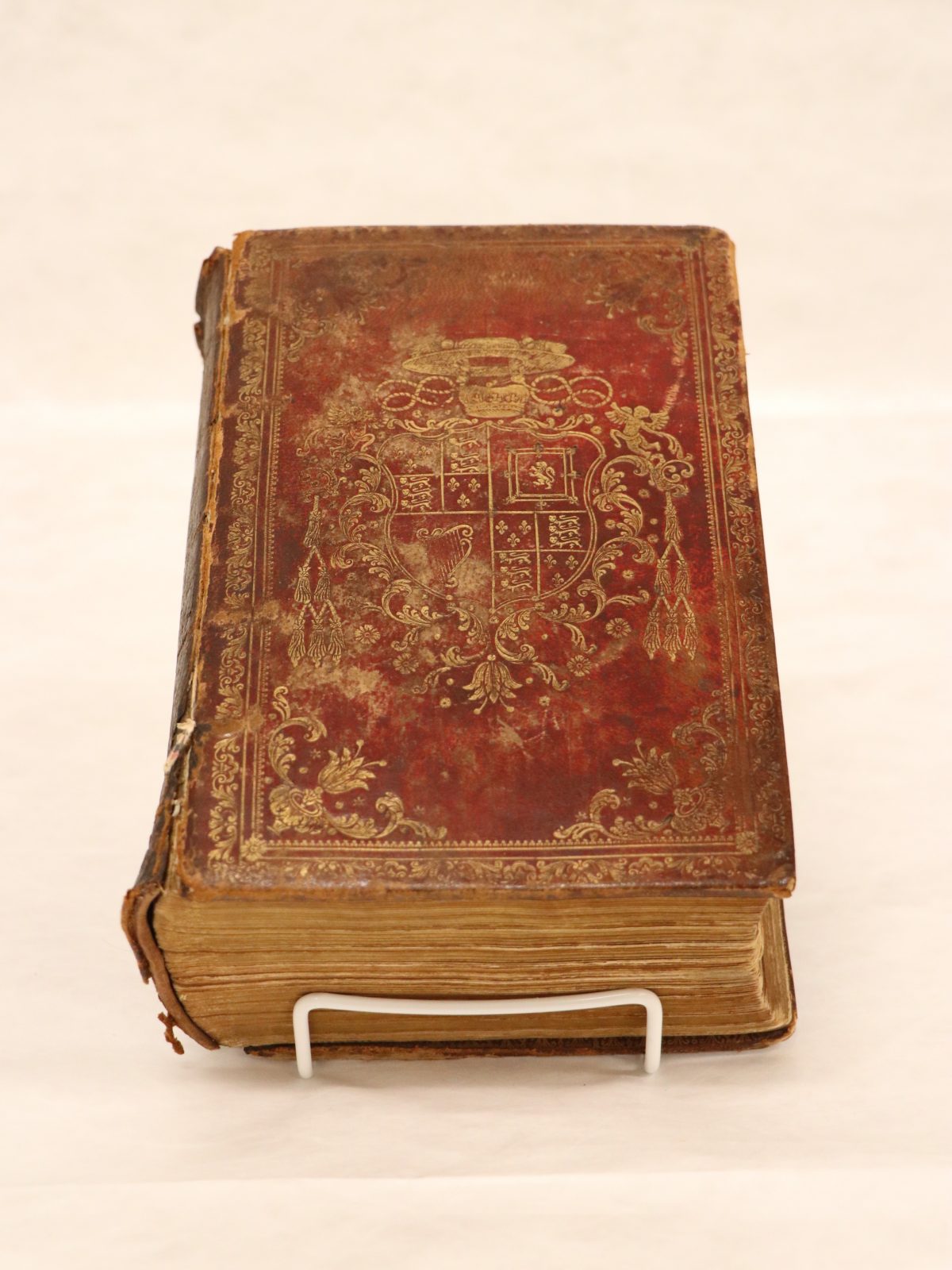

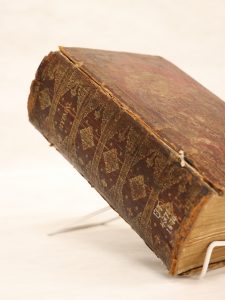
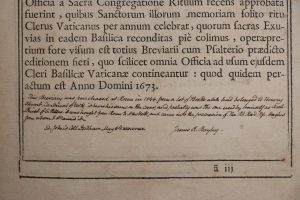
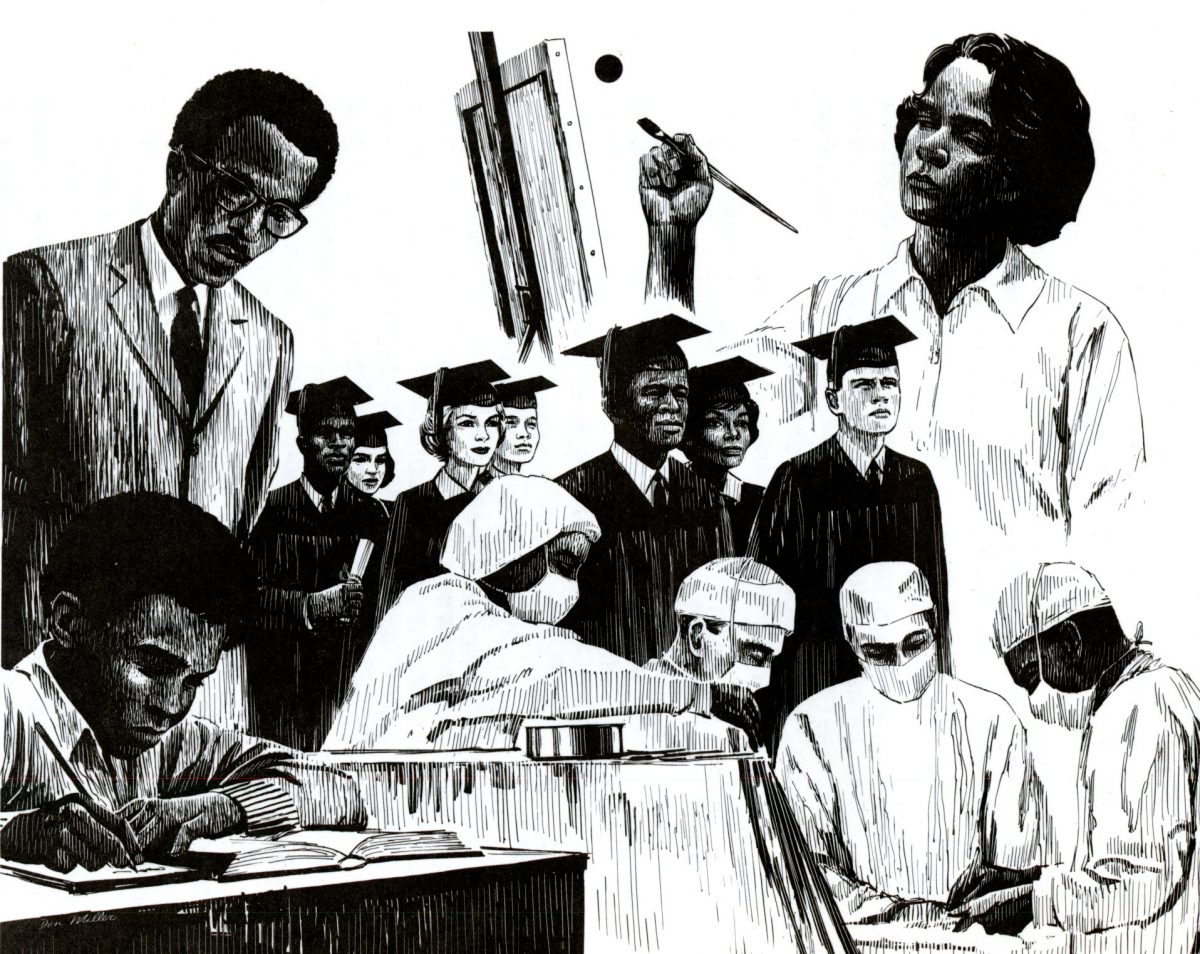
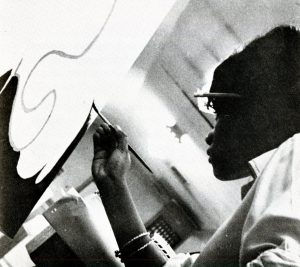
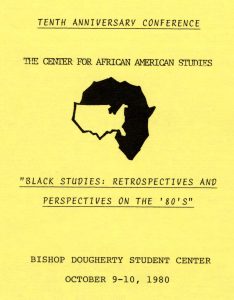
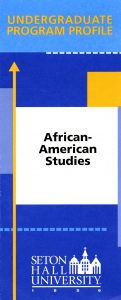 The archival records that correspond to the Center for African American Studies contain materials documenting the operation of the institute from 1970 until the late 1980s. Included within our holdings connected to this area are examples of budget data, office memoranda, course offering overviews, meeting minutes, newsletters, notices, and various operational files that show the inner-workings of the Center. More details about this collection can be found by consulting the following finding aid:
The archival records that correspond to the Center for African American Studies contain materials documenting the operation of the institute from 1970 until the late 1980s. Included within our holdings connected to this area are examples of budget data, office memoranda, course offering overviews, meeting minutes, newsletters, notices, and various operational files that show the inner-workings of the Center. More details about this collection can be found by consulting the following finding aid: 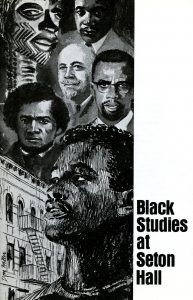
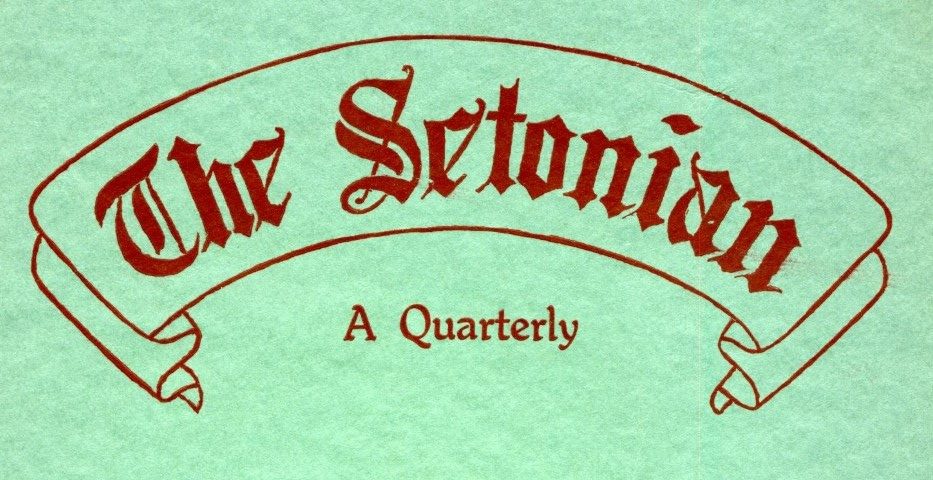
 With the onset of the Great Depression-era of the early 1930s, the scale of The Setonian became more modest in presentation with only a few issues published per academic year between 1931-32. Additionally, the size and content resembles more of a literary journal approach than a straight news organ. This was especially evident with the presence of the “Christmas Number” issues which would become a semi-fixture in latter editions of The Setonian over time
With the onset of the Great Depression-era of the early 1930s, the scale of The Setonian became more modest in presentation with only a few issues published per academic year between 1931-32. Additionally, the size and content resembles more of a literary journal approach than a straight news organ. This was especially evident with the presence of the “Christmas Number” issues which would become a semi-fixture in latter editions of The Setonian over time
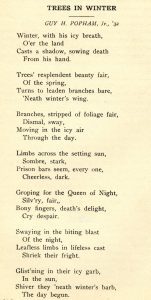
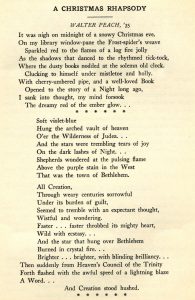 These and other examples are found not only during the earliest days of The Setonian, but in later editions and other expressions around campus even through the latest edition of the paper and as we celebrate the 10th anniversary of the memorable Tree Lighting this year, the spirit of this time of year and meaning of the season are documented for the ages. Happy Holidays everyone!
These and other examples are found not only during the earliest days of The Setonian, but in later editions and other expressions around campus even through the latest edition of the paper and as we celebrate the 10th anniversary of the memorable Tree Lighting this year, the spirit of this time of year and meaning of the season are documented for the ages. Happy Holidays everyone!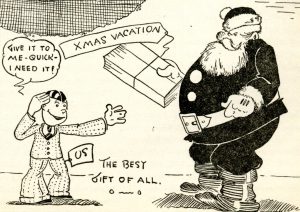
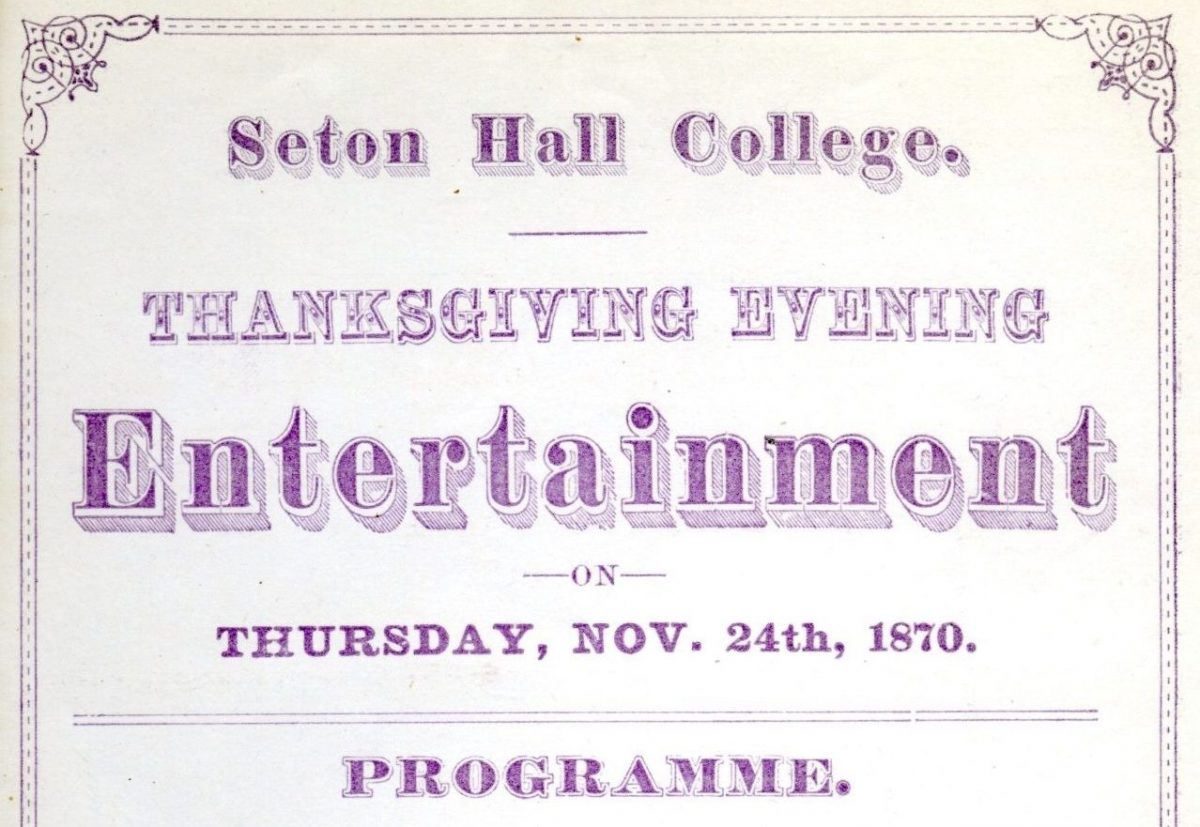
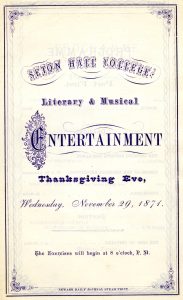
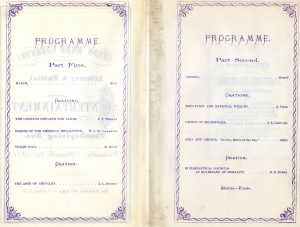
 For more information about holiday observances and any aspect of Seton Hall University History please feel free to contact us via e-mail at:
For more information about holiday observances and any aspect of Seton Hall University History please feel free to contact us via e-mail at: 